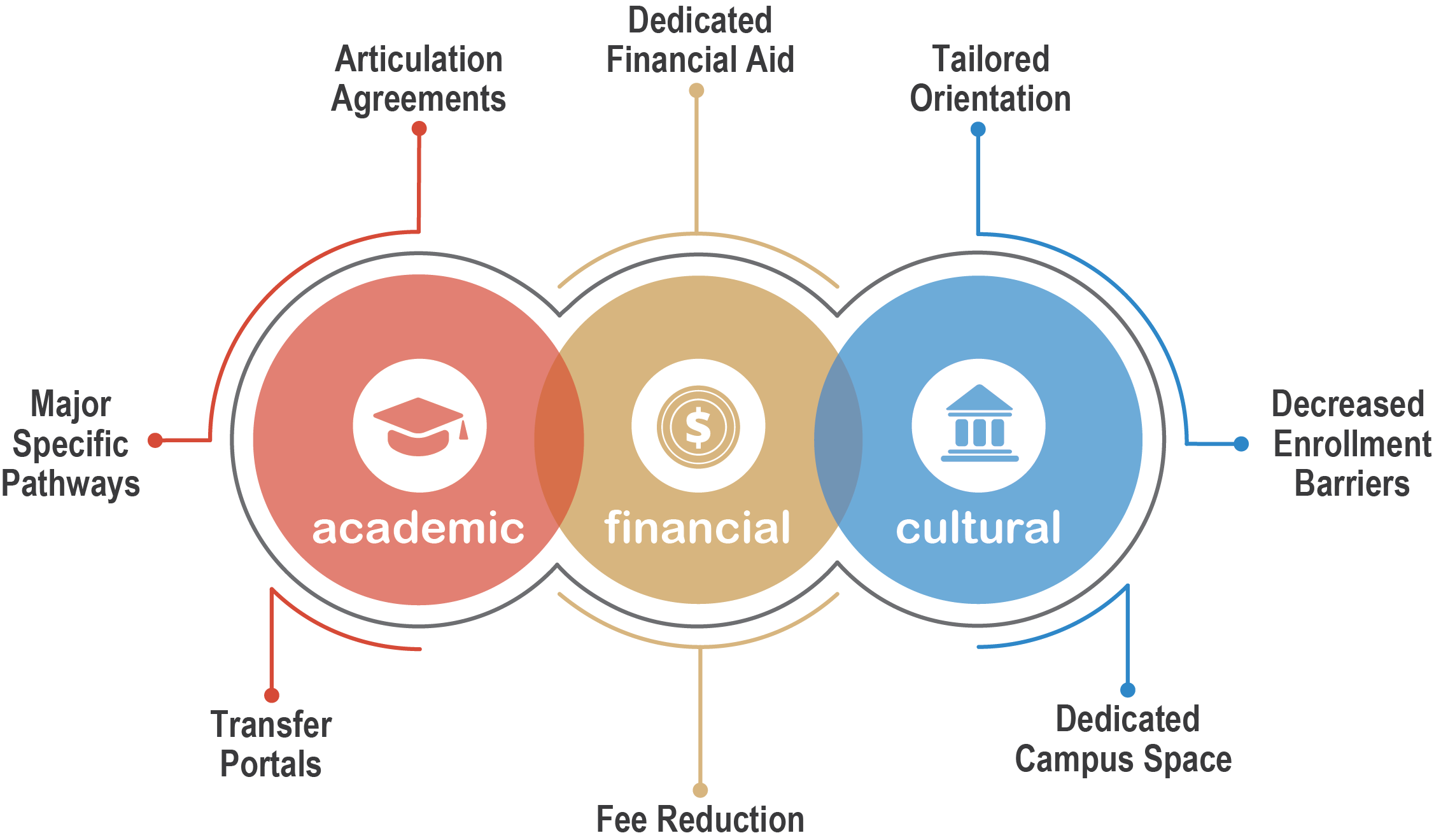New Report Identifies Strategies for Independent Colleges Looking to Improve Transfer Pathways
Covid-19 has fundamentally altered the landscape of higher education, producing both challenges and opportunities for higher education institutions to better serve traditionally understudied student populations. Transfer students, specifically students that transfer from community colleges to four-year independent colleges, are one such population that has been historically underserved but whose needs will be all the more relevant during and after the pandemic.
Enrollment shifts caused by the pandemic highlight the need for rapid innovation in the area of community college to independent college transfer. Covid-19 is expected to produce an increase in community college enrollment due to students’ desire to remain closer to home and pursue a more affordable education. As has been the case in the past, many of these students will be looking to transfer to a four-year institution and earn their bachelor’s degree. Meanwhile, independent colleges facing financial strain due to decreased tuition revenue will increasingly be turning to local transfer students as a way to boost enrollment numbers. Streamlining the transfer pathway from community colleges to independent colleges will be necessary both for the financial health of independent four-year institutions and for the success of the increasing number of students pursuing this pathway.
In our new report, we investigate the often overlooked area of community college transfer to independent colleges. This transfer pathway offers great opportunity both for students seeking a high-quality, affordable education and for institutions looking to extend the benefits of a bachelor’s degree to traditionally underserved student populations. It is not without challenges, however–currently, only 13 percent of community college students earn their bachelor’s degree in six years, despite the fact that 80 percent plan on earning their bachelor’s degree when they first enroll. Our report identifies strategies in three key areas to improve this pipeline for students and institutions alike.
Academic strategies address the problem of credit loss and excess credit, which are often the most prominent barriers to bachelor’s degree completion for community college transfers. Transfer students on average lose 43 percent of earned credits when transferring, and that number increases to 54 percent for those transferring from public two-years to private nonprofit four-years. Taking additional credits costs students time and money, and can use up students’ eligibility for financial aid. Strategies such as articulation agreements, major-specific pathways, and transfer portals can be adopted to increase the number of credits transferred and help students map their pathway from community college to independent colleges.
Recent shifts in credit acceptance policy due to Covid-19 provide an opportunity to rethink credit transfer at scale through a consortial approach, a key recommendation from our report. Networks of colleges from state higher education systems to national organizations are adopting new policies on the transfer of P/F credits. Groups of colleges should capitalize on this momentum and adopt consortia-wide policies on credit transfer such as the statewide articulation agreement signed between North Carolina’s independent colleges and its community colleges. This consortial approach can improve credit transfer at scale and rapidly improve options for community college students looking to transfer to a variety of independent institutions within a certain region. As credit transfer policies continue to adapt to the realities of the pandemic, these consortial efforts are one way to quickly and effectively improve both the transfer of credit and the success rate of community college transfer students.
While academic strategies can best be pursued at scale, individual institutions’ cultural and financial strategies are also necessary for transfer student success. Cultural strategies alleviate transfer shock and create a welcoming environment that meets the specific needs of community college transfer students, keeping school life balance and support networks top-of-mind. Prioritizing these students through enrollment, orientation, and beyond can facilitate the adjustment to a new campus and prevent the decrease in academic performance that often accompanies transfer shock. Financial strategies will also be increasingly necessary to address the increased costs faced by students transferring from a community college. Unmet need was a major barrier to enrollment even before Covid-19, and the pandemic will further necessitate increased financial aid for community college transfers.
Implementing these changes will require significant investment from higher education institutions and funders alike. The pandemic has undoubtedly created its own barriers to pursuing many of these strategies; however, it has also created the impetus to rethink how current policies impact transfer students overall and particularly community college transfer students. Improving this pathway will be critical to increase equitable access to a four-year degree in years to come.
